This is going to be an article about the shortcomings of loquats, so first let me say some positive things. They’re plentiful all around Austin. They’re easy to grow. They don’t fall prey to pests. The trees look nice. They taste pretty good and not particularly like anything else you’ve ever tasted.
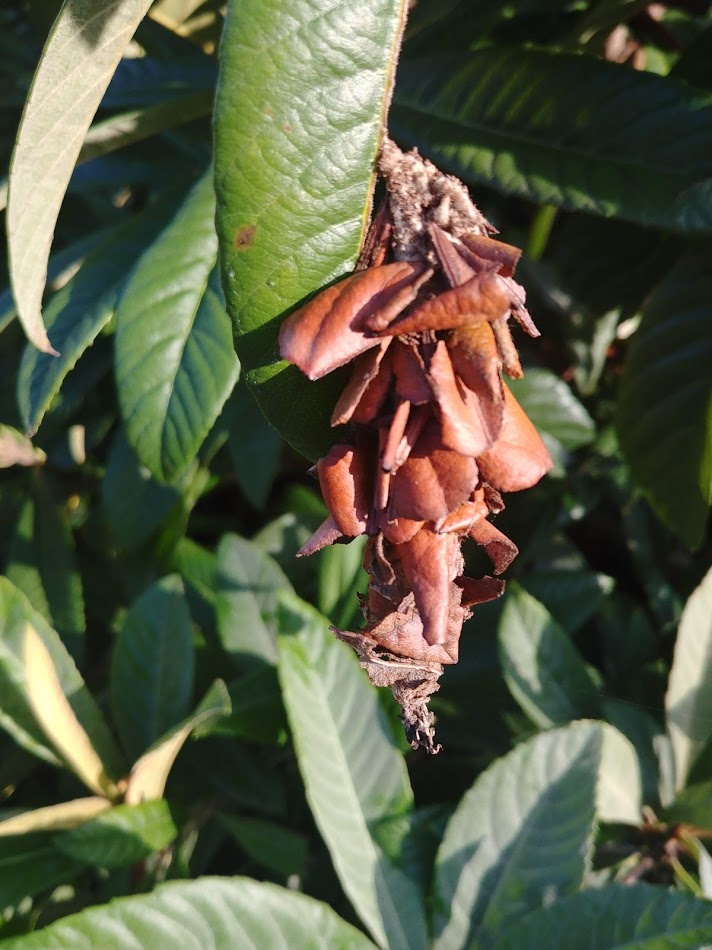
Okay, now why you’ve probably never eaten them before.
Loquat flowers don’t handle freezes very well. The fruit does a little better, but a hard freeze will kill them and they’ll drop off. Since loquats bloom in the fall and bear fruit in the spring, this can be a problem. The trees themselves can survive Texas winters, but in practice, every third year we lose the loquat harvest. So if you live in Austin and you’re enjoying a delicious loquat, savor it as a pleasure which is not guaranteed.
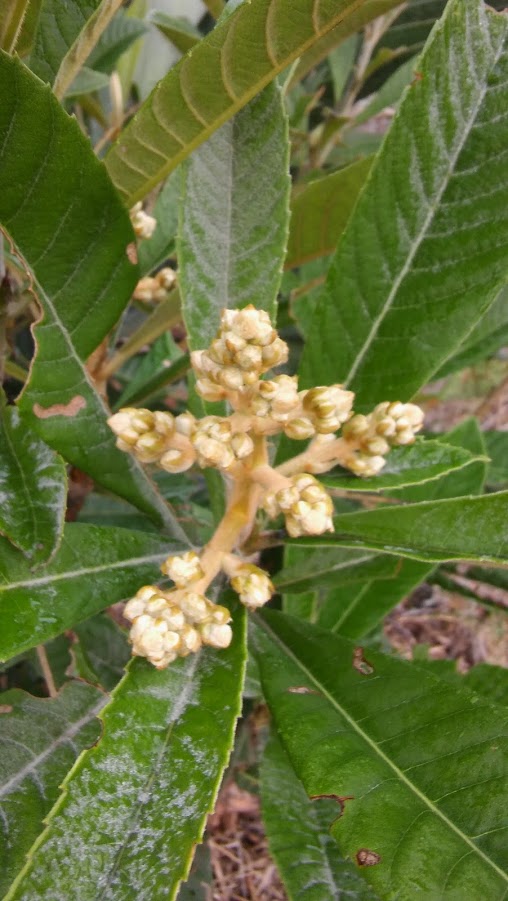
Which brings us to the second point, loquats don’t keep very well. They bruise easily so they can’t travel and they can’t sit on your counter for more than a day or two after you’ve picked them. For this reason we’ll try to share some of our canning and preserving recipes on this site. But keep in mind the bruising part, we’ll come back to that.
Another reason why you don’t see loquats down at the local green-grocers, they have several anatomical features which make them difficult to eat and to process:
- giant seeds
- tough skin
- a bit of a rind around the seeds
- there’s a fuzzy little butt opening at the bottom
- it takes a while to pick any quantity of them, and the best looking fruit will be way above your head
All these shortcomings just mean that loquats are a special treat just for you and whatever friends you care to share in it.
How to Eat Loquats
Just pick them off the tree and pop them into your mouth. If you pick them while yellow they’ll be a little tart and crisp, but perfectly edible. If you pick them while a golden orange the loquats will taste sweet as butterscotch. Chew. Pop the seeds out of the fruit and spit them out like eating a watermelon. Suck out the juices. It’s your choice if you want to eat the skin or just chew it and spit it out. Repeat.
How to Prepare Loquat
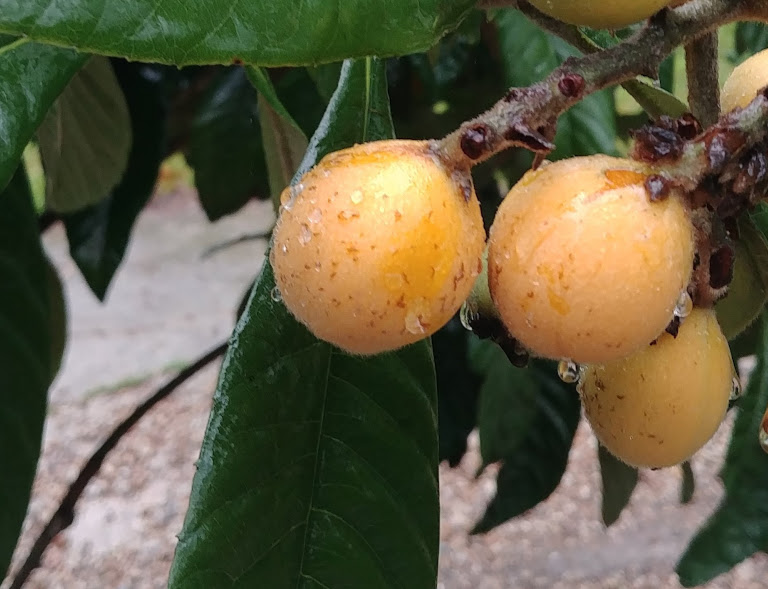
Canning works well, as does pickling. Fruit preserves or jelly work well and give you the loquatty taste well into the fall (although I’ve discovered that I really don’t eat as much jelly as I thought I did).
Dealing with Loquat Pits
If you want a pretty piece of fruit, try cutting the loquats in half with a paring knife and then scraping out the seeds and the pith. If you don’t need anything that looks pretty, you can tear the fruit apart with your hands and then throw junk in one bowl and fruit in the other.
Recently I’ve taken to using a hand-cranked fruit crusher and then squeezing the juice out of the resulting mess in a wine press, pretty much sidestepping the whole business with the seeds and the skin.
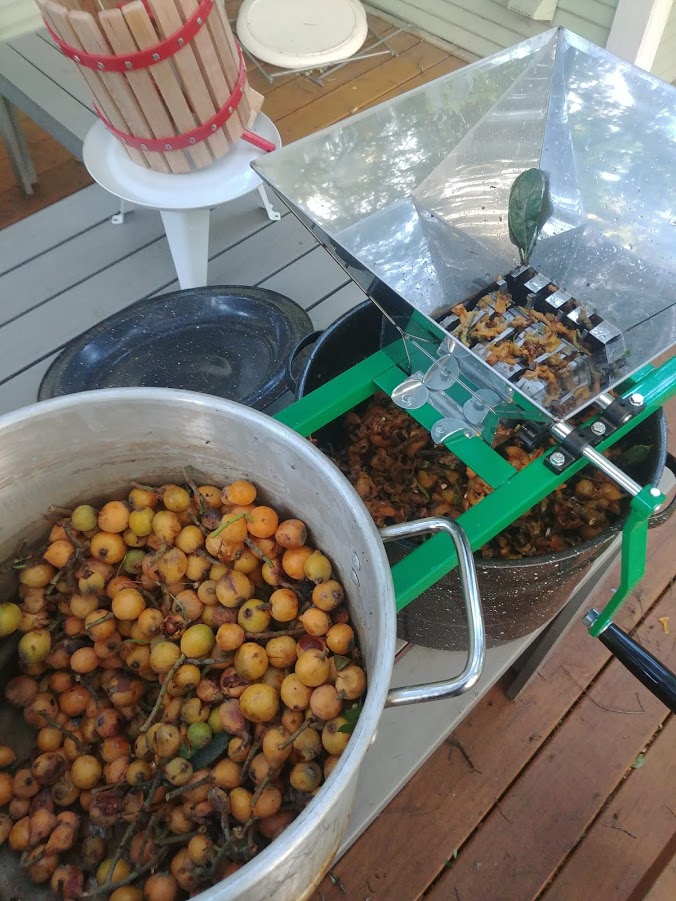
Dealing with the bruising
Back in my baking days, when we would core a case of apples all at once to make pies, we would keep the apple slices from browning by dredging them in sugar and lemon juice. The same trick works for loquats. Something about the acid of the lemon juice or the chemistry of the sugar keeps the loquat pieces from oxidizing.
Dealing with the Skin
Juicing is a good option. There’s not as much juice as you’d like though. Recently I took a ten gallon pot of loquats, stems and all, and juiced it down to about a gallon and a half. The consumer-grade fruit press I mentioned above works pretty well. In the past I’ve tried de-seeding the loquats and then running them through a de-seeding mill to get the juicy bits out, and it never worked as well as I hoped.
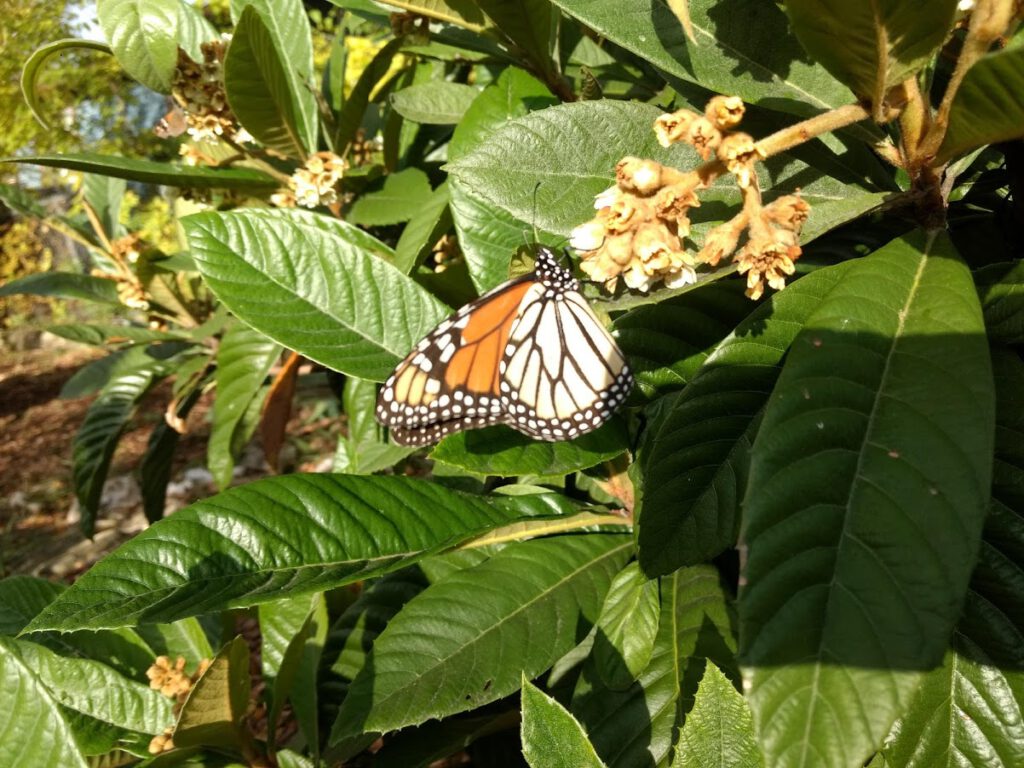
We’ve also experimented with stewing the de-seeded loquats overnight in a crock pot until the skins dissolved. The resulting brown paste had the flavor of raisins. Not necessarily bad, per se, but only vaguely recognizable as loquats.
Recently we’ve tried blanching, chilling in ice water, and then peeling, an approach which will surely garner further research in the harvests ahead.
Don’t Be Shy!
If you have any insights, strategies, or loquat recipes to add to our collective knowledge, drop us a line! You can leave a comment on the site, or you can send us an email at tipline@loquatfest.com. Thanks!